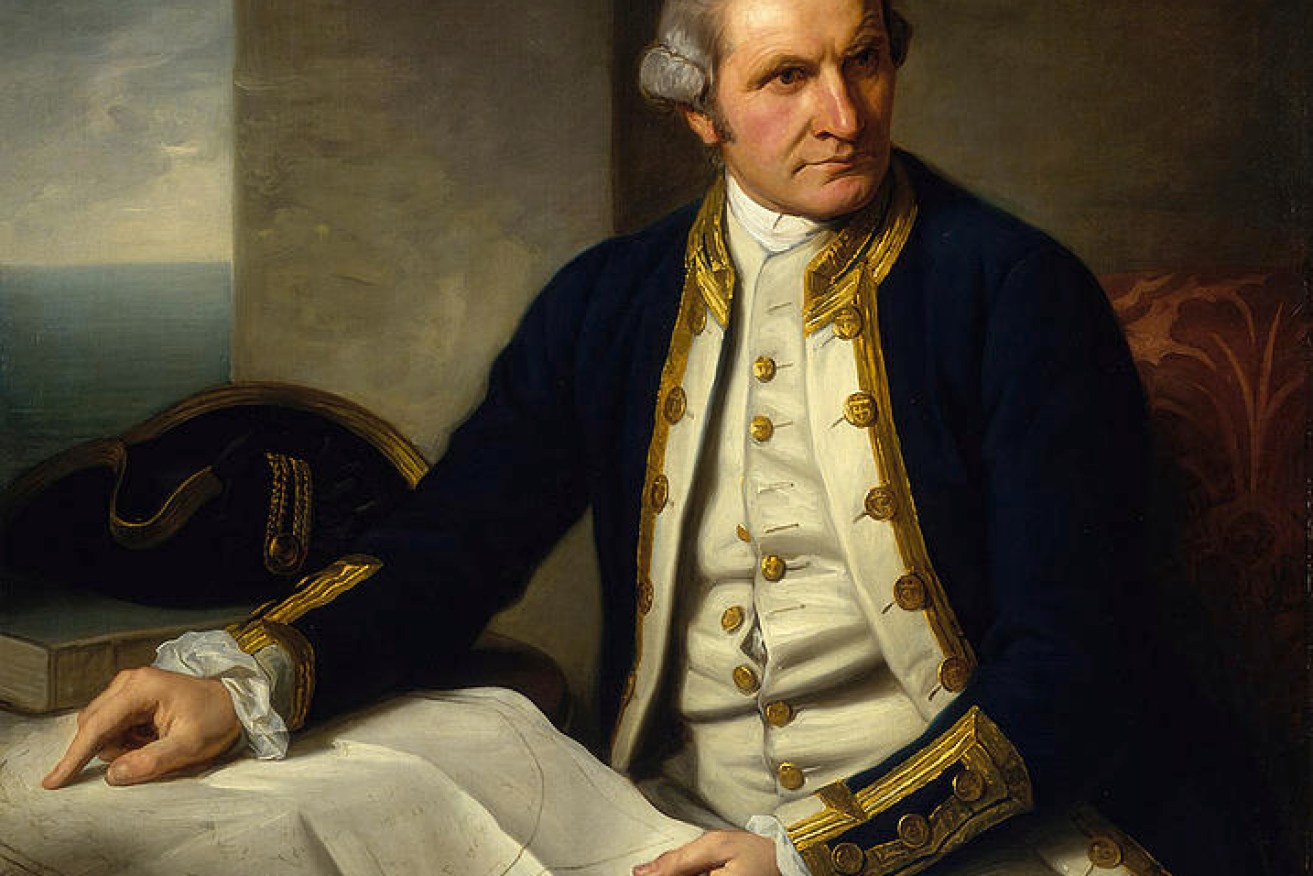Heroes, zeroes and who deserves a statue: The complex writing of history


Realistic versions of Captain James Cook's death present a different light on his actions. Photo: Getty
Should there be anything more to our teaching of history than a roll call of lily-white heroes and thoroughly rotten scoundrels?
This is one of the questions raised by the tearing down of statues here and abroad – and by the exhausting partisanship that makes a more nuanced, patient conversation about the past difficult, to say the least.
In the US, rage is being directed at statues of slave traders and Confederate generals.

Historian Dale Blair seeks to provide context to the story of Captain James Cook.
In Australia, there’s a renewed push to remove statues of colonial figures deemed racist. The figure who seems to most divide people is Captain James Cook, the Royal Navy officer who reported to the Royal Society in England that a great southern land was suitable for habitation and farming.
He made clear the continent that eventually became named Australia was populated with indigenous people, having seen their fires burning all the way along the eastern coast – and having met with some of them.
Cook expressed admiration for the indigenous way of life. But his men still fired at two Aborigines upon landing at Botany Bay.
In this week’s Covid Conversation, the last in the series, my guest is historian Dr Dale Blair, who tells the good and the bad about Cook – and seeks to provide some context.
I also asked Dr Blair which statues would he like to attack with a chisel and hammer.
Confederate uniform, but a pretty good bloke
Dr Blair is a former president of the American Civil War round table, which meets monthly in a Melbourne pub to analyse battles, characters and the defence of a way of life that included slavery.
In our conversation, he tells the story General James Longstreet, one of General Robert E Lee’s most trusted commanders during the war. There is a statue of Longstreet in Gainesville, Georgia, where he died.

General James Longstreet, a Confederate story that deserves to be told. Wikipedia/Creative Commons
Dr Blair makes a case that Longstreet’s story “probably needs to be told right at this moment of history” – because that story illustrates “that people can change.”
Dr Blair says: “He’s quite a tragic figures in some ways. He’s also a redemptive one as well.”
Longstreet, he explains, was born in South Carolina, grew up as a boy in Georgia. “His father owned a plantation. As a young man he owned a small number of slaves himself. So he grew up in the ‘peculiar institution’. He’s no stranger to slavery, it’s part of his family’s life and tradition.”
The war years were ruinous. “He’s had the trauma of fighting in those battles, he’s been severely wounded as well, and he lost three of his four children to scarlet fever within six days of an epidemic.”
At the end of the Civil War he joins the Republican Party, the party of Abraham Lincoln.
“It was an abolitionist party,” says Dr Blair. “It had a number of abolitionists in it. It was a left wing party. Since been flipped. Now it’s very much a right wing party.”
Longstreet’s message to his fellow Southerners was to move on with their lives.
In 1874, a white supremacist group called the Crescent City White League, attempted to take over New Orleans, as part of a push to revive the fallen South. Five thousand of them had overrun the metropolitan police.
Says Dr Blair: “Longstreet is called up and heads the militia in new Orleans which is a mixed white and black militia. And he leads them against these White Leaguers. He’s a great figure.”
An historian’s trouble tackling the sacred
More than 20 years ago, Dale Blair wrote a book called Dinkum Diggers that caused a bit of a stir because it argued that the legend of the Anzacs as golden, resourceful, unfailingly brave heroes of World War One was a more complicated matter.
Those young soldiers were terrified. Many broke down mentally. Most were overwhelmed by an industrial war that allowed little by way of personal heroism – although, of course, there were some outstanding cases of selfless derring-do.

Dinkum Diggers, the 1998 book by Dale Blair that brought the Anzac legend down to a human scale. Image: MUP
Some critics – protective of the legend and the nationalism associated with it, and perhaps of the few remaining WWI veterans still alive – laid in heavily into Dr Blair at the time.
This was when Australia was leading up to the Sydney Olympic Games and our self-belief as a nation was pumped – and Anzac Day had become an event for some people to wear the national flag as a cape.
The mood didn’t leave much room to sympathetically account for the many young Australian men whose minds were literally blown by their experiences in the trenches.
Since then, our understanding of mental health has matured – in fact, we now have allowances for “mental health days” in many workplaces. The telling of history and the evolution of society tend to go hand in hand.
“I think we have matured and there is a greater evenness in the way in which we approach (the Anzac story),” says Dr Blair.
“There is still a cohort out there who you might term as ‘nationalist’ who want to tell that story of Australian exceptionalism … and of Australians winning the war. But that populist view is the bane of historians.
“I think we’re always going to be fighting those spot fires.”
Click here to listen to the final episode of the Covid Conversation. In a few weeks , we launch a new podcast that discusses science, news, a psychologist’s perspective on modern problems, and what the readers want to know. Readers questions about science or about real life, send them to [email protected]









